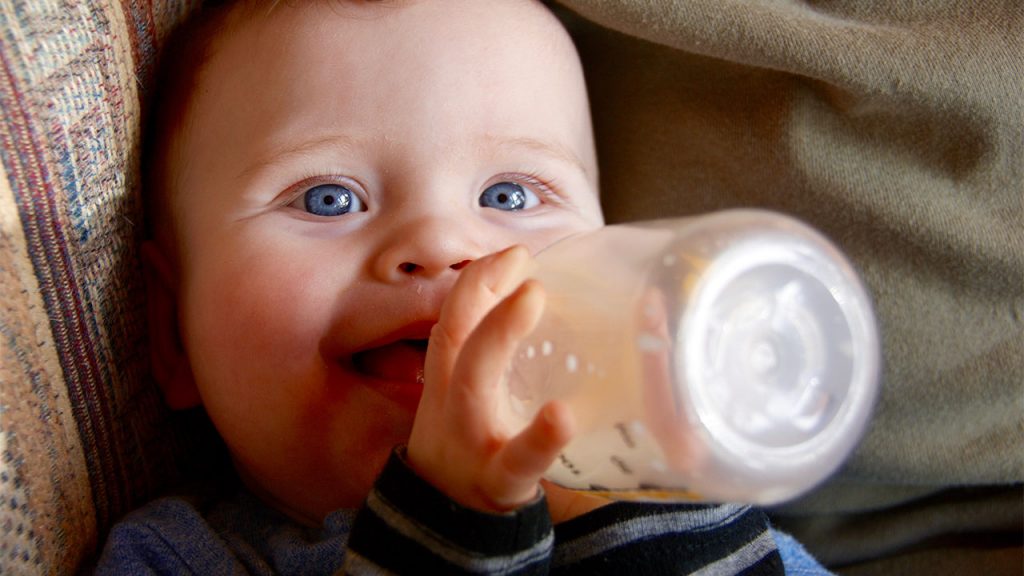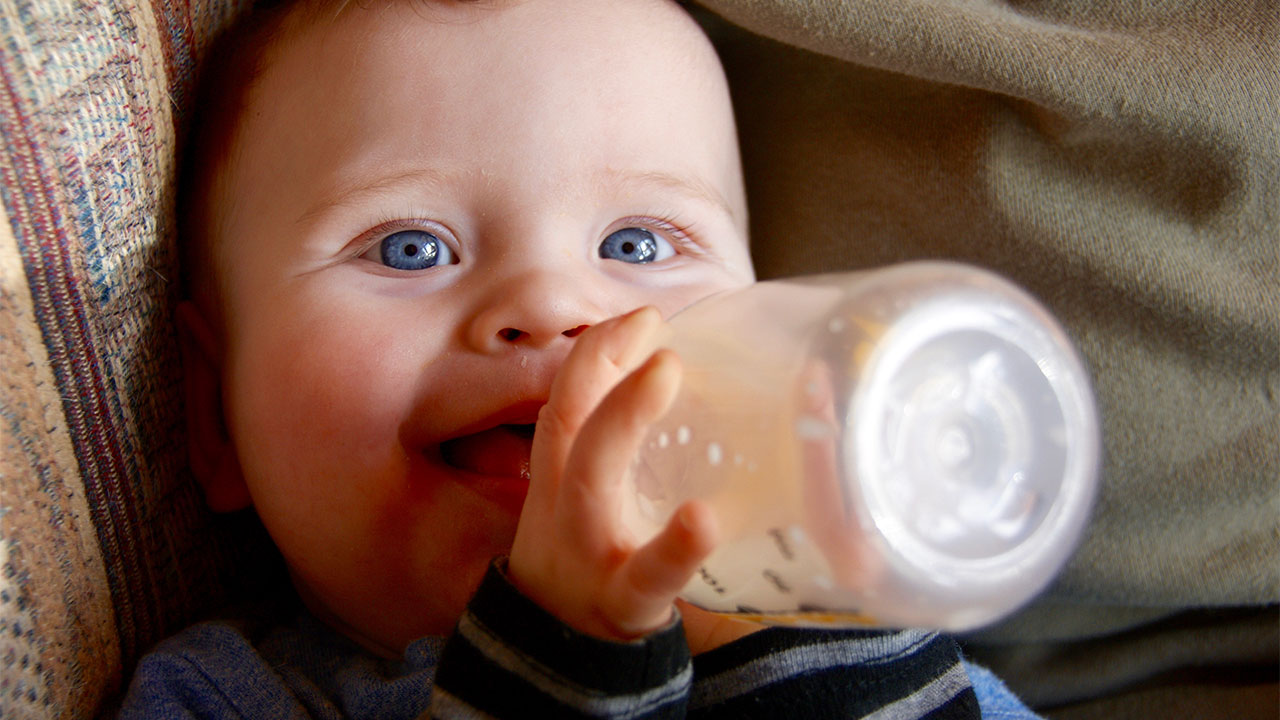Newborns are often too fragile, so many parents are always on the lookout for something that will aid the healthy development process. But it is imperative that you keep yourself well informed about every action you take, or you may cause more harm than good.
Within the first 4 to 6 months, babies only need breast milk or a supplementary formula. Though you may find it hard to believe, breast milk contains all the required nutrients for the development of your newborn, so you shouldn’t be tempted to experiment with other foods or juices.
The baby’s organism isn’t developed to a stage where it can process other foods or juices, including cereal. The earliest stage where you can start considering introducing food or liquids past breast milk or formulas is when your baby is at least full 4 months of age. If you’re worried that your baby isn’t getting all the nutrients from breast milk, you should consult your pediatrician and see what they say.
If you’re bothered with concerns like how much rice cereal in bottle for 1 month old, our guide will help you understand how to feed your newborn in the first couple of months and when it’s safe to introduce solid foods.

Feeding Your Baby During the First 6 Months
During the first 4 to 6 months of age, babies aren’t ready to eat and digest solid foods. However, many worried parents think that rushing the process will benefit their children. Rice cereal is traditionally one of the first foods many parents give their babies since it is a simple one-ingredient food without any added salt or sugar.
Even though it is an excellent choice for the first food, rice cereal or other solid foods shouldn’t be introduced to the baby’s diet within the first 4 to 6 months.
The best thing to feed your baby for the first 4 to 6 months is breast milk or formula. It is the only food the baby needs, and adding anything to the milk can only cause harm.
Breast milk consists of water, protein, lipid, and carbohydrates in controlled amounts. It is also full of minerals like calcium, phosphorus, magnesium, potassium, sodium, and many other vitamins. Therefore, breast milk contains all your newborn needs for proper development. The nutrient content of breast milk is ideal for newborns and is also recommended after preterm birth.
Introducing Solid Foods
Depending on your baby’s development, they may be ready to start eating solids between 4 and 6 months of age. That’s when the baby’s digestive system is developed enough to handle foods past breast milk and formulas. Consulting your doctor will help you determine the best time to introduce solid foods into your baby’s diet.
A couple of indicators can also tell you that your baby’s ready to start eating solids. If your baby can support their head steadily, sit upright without any help, grab and hold onto objects, and show interest in food when you eat, it might be time to start introducing solids into their diet. However, to be safe, you should still wait for the first 4 to 6 months to pass before feeding your baby with solids.
Read more: How To Make Baby Oatmeal

How to Feed Rice Cereal to Your Baby
Once you’re sure it is safe to introduce solid foods into your baby’s diet, rice cereal is the absolute best choice. But you should be very careful about how you feed the baby. Though many people think that adding rice cereal to the baby’s bottle is a safe thing to do and that it might even promote better sleep, recent studies state otherwise.
Adding rice cereal won’t keep the baby asleep. Instead, it may raise the risk of choking. Rice cereal makes the milk much thicker, which might be an issue for babies used to drinking thin milk. The thickness of the mixture may even lead to developing difficulties in telling apart solid from liquid foods and pose an even more significant challenge when your baby needs to start eating solids.
Whether it is rice or any other cereal, you should never put it in a bottle. Instead, prepare the food in a small bowl, and feed it to the baby with a small baby spoon. But how much rice cereal in bottle for 1 month old should be enough?
Mix 1 tablespoon of single-ingredient baby cereal with about 4 tablespoons of baby formula or breast milk to prepare the food. Get the baby sitting upright to lower the risks of choking, and try to feed them a teaspoon of the cereal. It will take a lot of practice, and things will get messy, but after some trial and error, your baby will learn how to swallow the cereal, so you’ll be able to increase the thickness of the mixture.
Also read: How to Cut Strawberries for Baby
What Else Can You Feed Your Baby?
When the time for solid foods comes, you can try several other foods past cereal. The best options include single vegetables and fruits. You can start with mashed or cooked broccoli, potato, sweet potato, carrot, apple, or pear. Try not to focus on sweeter flavors, and introduce vegetables like broccoli, cauliflower, and spinach first. It will help your baby get used to a range of tastes instead of getting used to sweet foods and becoming a fussy eater.
Foods that contain potential allergens such as peanuts, eggs, gluten, and fish should be handled carefully and given one at a time so that you can spot any allergic reactions promptly.
Read more: How To Teach A Baby To Drink From A Straw
Final Thoughts
Solid foods and different questions like how much rice cereal in bottle for 1 month old shouldn’t be your concern during the first 4 to 6 months of your baby’s life. During this period, you should only focus on keeping your baby fed and content using breast milk or baby formula.
Though putting rice cereal in your baby’s bottle may sound like a tradition passed for generations, studies show that giving a one-month-old any type of cereal can pose many health concerns. Therefore, stick to breast milk and baby formulas within the first 6 months, as these liquids have all the nutrients your baby needs at this time.








